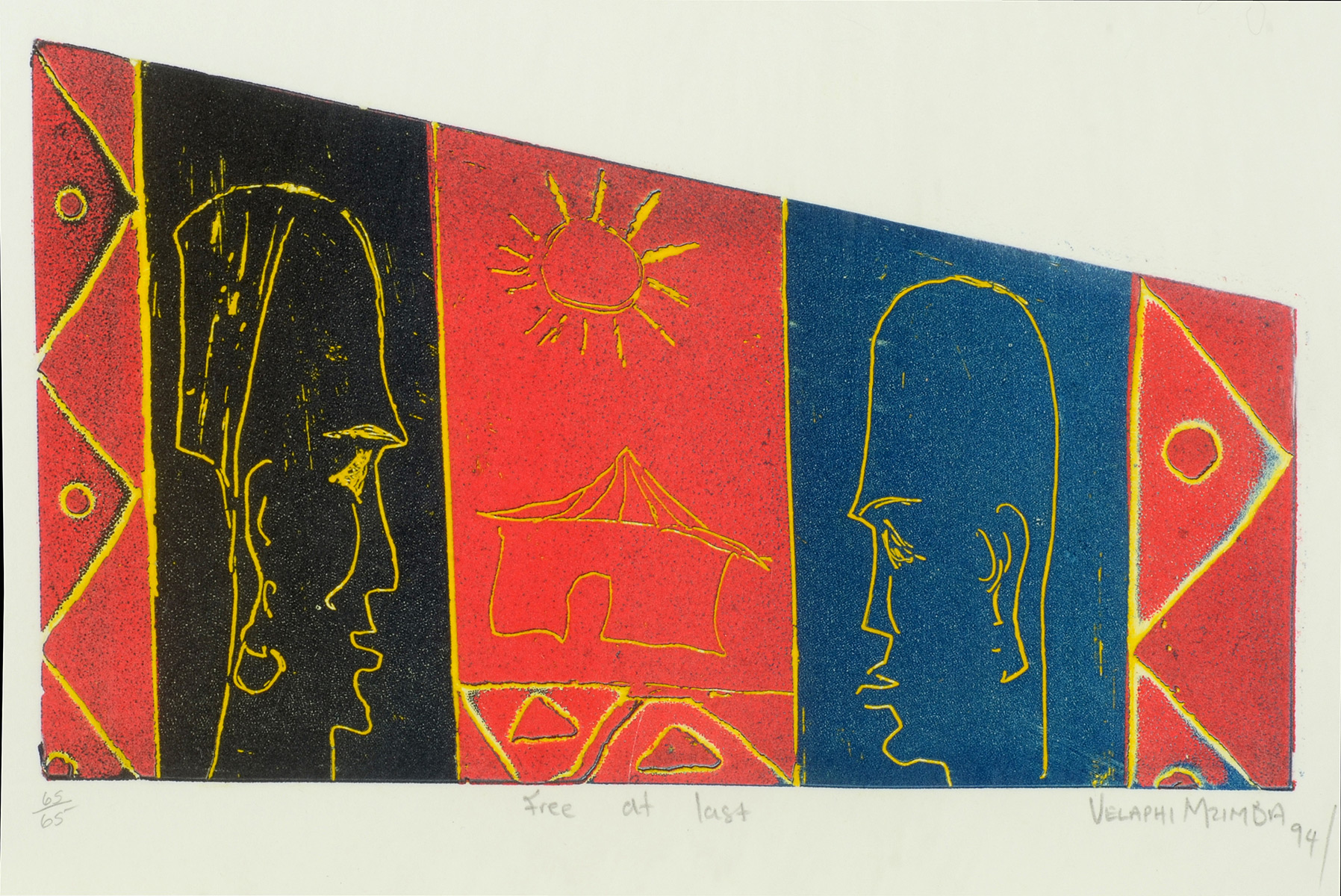George Velaphi MZIMBA (b. 1959)
BIOGRAPHY
Born in Dube, Soweto, Velaphi George Mzimba’s vibrant paintings portray South Africa’s dynamic and evolving environment. At age 16, he joined the Mofolo Arts Centre, where Dan Rakgoathe taught him pastel painting, drawing and other art techniques. Due to the 1976 uprising, the school was closed and Mzimba became involved in the protests. In 1978, Mzimba received funding to study with Bill Ainslie at the Johannesburg Art Foundation.
Mzimba is well-known for his expansive, often evocative portraits that humanise his fellow South Africans and restore the dignity they were denied by the Apartheid system. He developed a technique that was entirely his own and instantly recognisable. His large canvases on textured surfaces are full of expressiveness and humanity. He portrayed township life and Zama Zama miners who work without a permit. He also focused on portraits of children and women – some large-scale oils and some smaller works on paper. He was also known for more eclectic images featuring portraits and objects in a single composition and he made numerous sculptures, graphic works and paintings on found objects.
Mzimba’s first solo exhibition was held in a gallery run by the South African Association of Arts at the Carlton Hotel, Johannesburg, in 1981. Thereafter, he held several solo and group exhibitions in South Africa, the United Kingdom, China and the United States. His work is also part of several public, corporate and private collections worldwide, including the Constitutional Court Art Collection, Fort Hare University, the Sanlam Art Collection, and the Dallas Museum and the SABC Art Collection.


